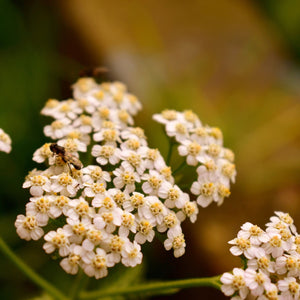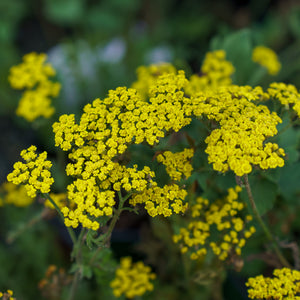The Achillea Guide
Achillea, commonly known as yarrow, is a hardy, sun-loving perennial renowned for its feathery foliage and flat-topped flower clusters that bloom from late spring through summer. Beloved by pollinators and gardeners alike, Achillea offers long-lasting color in sunny beds, borders, and meadows. With colors ranging from soft pastels to bold reds and oranges, yarrow creates a dynamic, drought-tolerant display that's easy to care for and remarkably versatile.
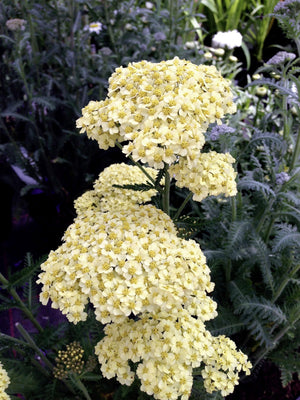
About
Achillea is a genus of flowering plants in the Asteraceae family, native to Europe, Asia, and North America. The most well-known species, Achillea millefolium, is valued for its finely dissected, aromatic foliage and broad adaptability. Modern hybrids offer a wide range of colors, heights, and bloom durations, making yarrow a staple in both formal and wild-style gardens.
Cultivars such as Achillea millefolium 'Paprika', with its rich red blooms, and Achillea 'Moonshine', a classic with soft yellow flowers and silvery foliage, are widely popular. Taller selections like Achillea millefolium 'Sassy Summer Sangria' and Achillea millefolium 'Terracotta' add height and structure to perennial borders. For compact spaces, the New Vintage series offers dense, upright forms in a range of colors including 'New Vintage Violet' and 'New Vintage White'. The soft blush tones of Achillea 'Apricot Delight' and the creamy double blooms of Achillea ptarmica 'Peter Cottontail' bring elegant texture to mixed plantings.
Yarrow is known for attracting pollinators, including bees and butterflies, and its strong scent tends to deter deer and rabbits. It also serves as an excellent cut flower and is often used in dried arrangements.
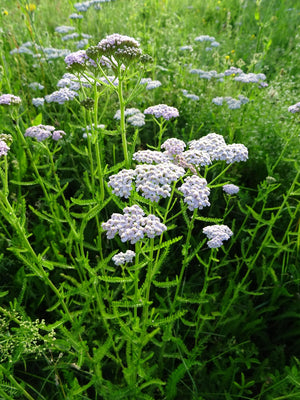
PLANTING
Achillea is easy to grow and thrives in dry, sunny conditions with minimal maintenance once established.
- USDA Hardiness Zones: 3–9
- Soil: Well-drained soil is essential. Yarrow tolerates poor, sandy, or rocky soils and dislikes wet feet.
- Sunlight: Requires full sun for best flowering and growth. Shade can lead to leggy stems and poor bloom production.
- Watering: Water deeply but infrequently once established. Avoid overwatering, especially in heavy soils.
- Spacing: Space plants 12–24 inches apart depending on variety. Tall types like 'Sassy Summer Taffy' may need more room to spread.
- Planting Time: Plant in spring or early fall to allow roots to establish before extreme temperatures.
For transplants, dig a hole twice as wide as the root ball and level with the surrounding soil. Backfill, water thoroughly, and mulch lightly to conserve moisture.
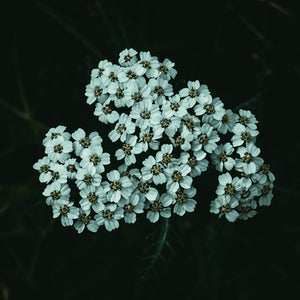
CARE
Achillea is low-maintenance but benefits from a few seasonal practices to promote health and bloom.
- Watering: Once established, yarrow is drought-tolerant. Water during extended dry spells, especially in the first year.
- Fertilizing: Yarrow generally needs little to no fertilizer. Too much can lead to floppy growth. A spring compost dressing is usually sufficient.
- Deadheading: Remove faded blooms to encourage reblooming and extend the flowering season.
- Pruning: Cut plants back to the ground in late fall or early spring to promote healthy new growth.
- Dividing: Divide every 2–3 years in early spring or fall to maintain vigor and control spread.
- Pest & Disease: Rarely troubled by pests or disease. Ensure good air circulation to avoid powdery mildew.
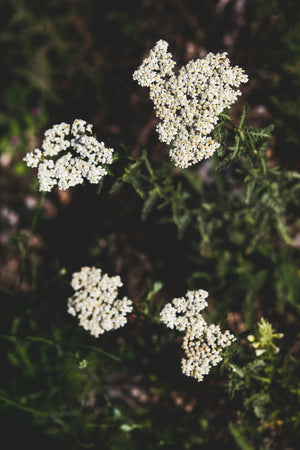
HOW TO USE
Achillea’s upright habit and long bloom time make it a valuable addition to many landscape designs.
- Pollinator Gardens: Loved by bees and butterflies, yarrow is a reliable nectar source all season long.
- Drought-Tolerant Landscapes: Combine with echinacea, rudbeckia, and salvia for water-wise borders.
- Cottage & Meadow Gardens: Blends beautifully with grasses and perennials like Coreopsis and Gaura.
- Cut & Dried Flower Gardens: Excellent for fresh bouquets and dried floral arrangements.
- Front of Border or Edging: Compact cultivars like 'Milly Rock Rose' or 'New Vintage Purple' are ideal for defining pathways or filling smaller spaces.
Pair Achillea with lavender, sedum, Russian sage, or ornamental grasses to create layered, colorful combinations that perform well in sun and heat.
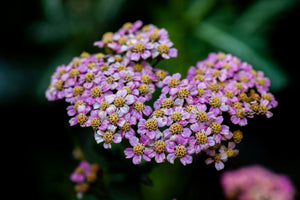
Common Questions
- Are Achillea perennial? Yes, Achillea is a long-lived herbaceous perennial that returns each year with minimal care.
- Are Achillea poisonous to dogs? While not highly toxic, yarrow contains compounds that can cause mild gastrointestinal upset in dogs if ingested.
- Can Achillea grow in shade? Achillea prefers full sun and does not perform well in shade, which can cause weak stems and poor flowering.
- Do Achillea spread? Yes, most varieties spread via rhizomes. Some, like Achillea millefolium, can naturalize and fill in larger areas.
- Do bees like Achillea? Absolutely. Achillea is one of the top perennials for attracting bees and other beneficial insects.
- Do deer eat Achillea? No, yarrow’s strong scent and slightly bitter foliage typically deter deer.
- Do rabbits eat Achillea? Rarely. Like deer, rabbits tend to avoid yarrow due to its aromatic foliage.
- Does Achillea need full sun? Yes, full sun ensures compact growth and vibrant, abundant blooms.
- How tall do Achillea grow? Height varies by cultivar. Dwarf types grow 10–14 inches tall, while taller varieties like 'Sassy Summer Sangria' can reach up to 36 inches.
Conclusion
Achillea is a resilient, adaptable perennial that delivers color, texture, and ecological benefits all summer long. From its pollinator-friendly flowers to its low-water needs, yarrow deserves a place in any sun-filled garden. Whether you're planting the rich reds of 'Paprika', the cheerful yellow of 'Sunny Seduction', or the soft pastels of 'Apricot Delight', Achillea brings both beauty and practicality to your landscape.
The Achillea Collection
Sold Out
Sold Out

